15 Top-Rated Tourist Attractions in India where as India is a bustling region of remarkable contrasts where traditional and modern worlds collide. India, the world’s seventh-largest country by territory and second-largest by people has a rich legacy that has been shaped by centuries of different civilizations and religions.
Things to do in India include visiting sacred places and having spiritual encounters, while nature enthusiasts will enjoy its sun-kissed beaches, lush national parks, and fascinating wildlife reserves.
Visitors to this exotic country will uncover a bounty of spiritual, cultural, and historical riches, ranging from the beautiful Taj Mahal in Agra to the sacred sites of Harmandir Sahib (previously the Golden Temple) in Amritsar and the Mecca Masjid mosque in Hyderabad.
Refer to our list of the top tourist sites in India frequently to help you make the most of your trip in this magnificent country.
The Taj Mahal, perhaps India’s most recognizable structure, is also the world’s most famous testament to the power of love. This most exquisite of mausoleum, named after Mumtaz Mahal, Emperor Shah Jahan’s beloved wife, began upon her death in 1631 and took 20,000 workers until 1648 to complete.
The Taj Mahal is mostly made of white marble and incorporates various features of Islamic design, such as arches, minarets, an onion-shaped dome, and black calligraphy inlaid around the entryway. Delicate inlaid floral designs and precious and semi-precious stones like jade, lapis lazuli, diamonds, and mother of pearl add to its radiance.
The finest times to visit are at dawn or dusk when the changing lighting dramatically alters the mood. If possible, attempt to capture a glimpse of the Taj Mahal’s reflection from the Yamuna River’s far bank–it makes for a great (and safe) selfie. [15 Top-Rated Tourist Attractions in India]
Read More: Attractions & Places to Visit in Agra
The Holy City of Varanasi
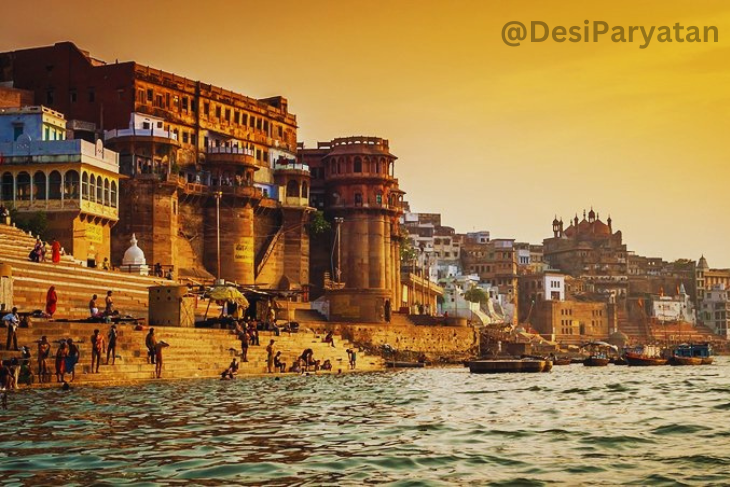
Varanasi, which dates back to the 8th century BC, is one of the world’s oldest continuously inhabited cities. This holy city has long been associated with the great Ganges River, one of the faith’s most prominent religious symbols, and is a key pilgrimage hub for Hindus.
Varanasi has several reasons to visit, not the least of which is the opportunity to tour the Old Quarter near the Ganges, which houses the 1780 Kashi Vishwanath Temple. The New Vishwanath Temple, which consists of seven different temples, is well worth seeing.
Bathing in the Ganges is very important to Hindus, and many places known as “ghats” have stairways leading to the water where the faithful bathe before prayers. Dasashvamedh Ghat and Assi Ghat are the largest. The latter, located at the confluence of the Ganges and Asi rivers, is particularly sacred.
Banaras Hindu University, founded in 1917 and known for its large library with over a million books, and the outstanding Bharat Kala Bhavan museum with fine collections of miniature paintings, sculptures, palm-leaf manuscripts, and local history displays are all worth seeing.
Read More: Attractions & Places to Visit in Varanasi
Harmandir Sahib: The Golden Temple of Amritsar

Amritsar, founded by Ram Das in 1577, is a major center of Sikh history and culture. The primary attraction here is Harmandir Sahib, which was built in 1604 and is still known as the Golden Temple due to its exquisite gold adornment.
The temple was built in a combination of Hindu and Islamic designs, making it the holiest of India’s many Sikh shrines (it also attracts many Hindus and people of other faiths). Its lower marble piece is embellished with elaborate inlaid floral and animal motifs, while the huge golden dome depicts a lotus blossom, a Sikh symbol of purity.
Visitors are similarly fascinated by the temple’s spiritual atmosphere, which is heightened by the prayers that are continuously repeated from the Sikh holy book and broadcast throughout the complex.
Visitors are welcome to partake in the full experience, which includes the opportunity to consume one of the 50,000 free meals served daily by the attraction.
The Golden City: Jaisalmer

The Golden City of Jaisalmer, so named for the yellow sandstone used in most of its buildings, is an oasis of exquisite old architecture rising from the Thar Desert’s dunes. Today, the city is packed with gorgeous old mansions, majestic gateways, and the gigantic Jaisalmer Fort, often known as the Golden Fort, a terrifying 12th-century edifice that stands high above the town.
Aside from palaces, temples, and lovely ancient dwellings, the stronghold has 99 bastions and large gates leading to its main courtyard, which houses the seven-story-tall Maharaja’s Palace. The palace, which was begun in the early 1500s and expanded by successive kings until the 19th century, has sections open to the public, including spaces elegantly ornamented with tiles from Italy and China and finely carved stone doors.
There are also several Jain temples from the 12th to 16th centuries, each with beautiful marble and sandstone images, palm-leaf manuscripts, and vividly painted ceilings. Check see the well-preserved 1,000-year-old Gyan Bhandar library, which houses several 16th-century texts and antiques. [15 Top-Rated Tourist Attractions in India]
The Red Fort, New Delhi
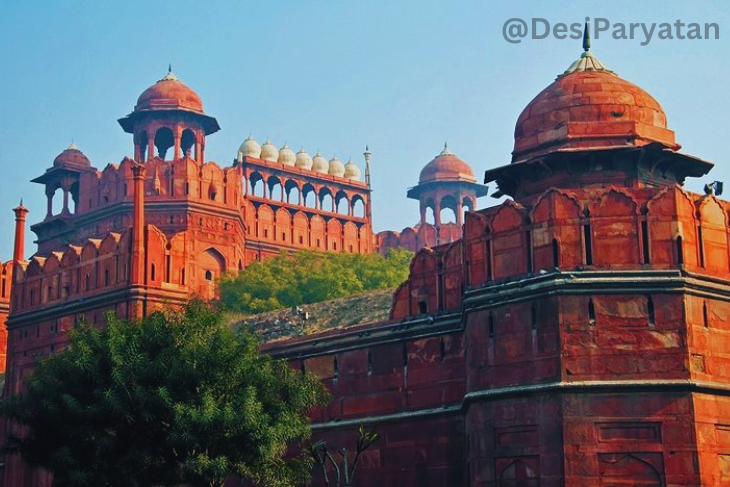
The magnificent crescent-shaped Red Fort in New Delhi, named after the stunning red sandstone used in its construction and built by Shah Jahan in 1648 as the seat of Mughal power – a role it maintained until 1857 – covers a vast area of more than two square kilometers, all surrounded by a large moat.
The fort’s two largest gates are the majestic Lahore Gate (the main entrance) and the intricately designed Delhi Gate, which was previously utilized by the emperor for ceremonial processions.
Exploring Chatta Chowk, a 17th-century covered bazaar selling everything from jewelry to silk clothes, as well as souvenirs and refreshments, is a fun aspect of a visit. While visitors can explore the fort on their own, guided tours are available that provide a fascinating insight into Shah’s life and times, including a peek inside the spectacular white marble Hall of Public Audiences (Diwan-i-Am) where he greeted his subjects.
Useful Tip: Try to stay for the nightly sound and light display, which depicts significant events in the fort’s history.
I am text block. Click edit button to change this text. Lorem ipsum dolor sit amet, consectetur adipiscing elit. Ut elit tellus, luctus nec ullamcorper mattis, pulvinar dapibus leo.
Mumbai: The Gateway of India

The renowned Gateway of India, standing an astonishing 26 meters tall and overlooking the Arabian Sea, is a must-see when visiting Mumbai. Built to celebrate King George V and Queen Mary’s arrival in 1911, this spectacular piece of architecture was opened with much pomp and ceremony in 1924 and was, for a while, the city’s highest structure.
The Gateway of India built largely of yellow basalt and concrete and remarkable for its Indo-Saracenic style, was also the site of a considerably less joyous procession of British soldiers when India attained independence in 1948. Nowadays, the massive archway serves as a breathtaking backdrop for both locals and tourists.
Useful Tip: After seeing the Gateway of India, head over to the neighboring Taj Mahal Palace and Tower for a delightful High Tea, which has been a popular activity in Mumbai since the hotel first opened in 1903.
Mecca Masjid, Hyderabad

Construction of Hyderabad’s Mecca Masjid, one of the world’s largest mosques and one of India’s oldest, began in 1614 during the reign of Mohammed Quli Qutub Shah and took about 80 years to finish.
This magnificent mosque’s 15 colossal arches and pillars were crafted from single slabs of black granite hauled to the site by massive cow trains reportedly comprising of up to 1,400 bulls.
This spectacular structure, which takes its name from the bricks above the central entrance that were carried here from Mecca, boasts highlights such as its main entryway, a vast plaza, and a massive constructed pond. There is also a room with Prophet Mohammed’s hair.
Other prominent elements are Quranic inscriptions above several of the arches and entrances, the magnificent main hall roof, and the cornices that surround the whole mosque construction. Look for the beautiful floral designs and friezes that adorn the arches. [15 Top-Rated Tourist Attractions in India]
Amer Fort, Jaipur

Amer Fort (sometimes spelled “Amber”) was erected as a fortified palace by Maharaja Man Singh I in 1592 and has long functioned as Jaipur’s capital. The fort is carved high up into the mountainside and can be reached on foot by a difficult climb or by shuttle trips from the village below (better yet, let an elephant do the work).
The first courtyard, Jaleb Chowk, with its many decorated elephants, and the Shila Devi Temple, dedicated to the goddess of war, are both highlights. The surrounding Hall of Public Audience (Diwan-i-Am) is also worth a visit, with its artistically adorned walls and monkey-infested terraces.
Sukh Niwas (the Hall of Pleasure), with its many flowerbeds and a channel previously used to carry cooling water, and the Temple of Victory (Jai Mandir), with its many artistic panels, colorful ceilings, and superb views of the palace and the lake below, are also highlights.
Jaigarh Fort, just above Amer Fort, was erected in 1726 by Jai Singh and features huge lookout towers, tough walls, and the world’s largest wheeled cannon. Spend time exploring Jaipur’s walled Old City, with its three fully rebuilt gates and magnificent bazaars, as well as the lovely City Palace, a large complex of courtyards, gardens, and buildings.
The Beaches of Goa.

Long recognized in India as the “go-to” place for those searching for a fantastic beach vacation, Goa’s magnificent western coastline, which overlooks the Arabian Sea, has only recently been discovered by tourists from other countries. Goa’s more than 60-mile coastline is home to some of the world’s most beautiful beaches, each with its own distinct attraction.
Agonda Beach is a fantastic alternative for people seeking peace and quiet, whereas Calangute Beach is by far the most commercial and congested. The beaches of Mandrem, Morjim, and Ashwem are popular among wealthy Indians and Westerners looking for upscale resorts, yoga retreats, and spa vacations. Palolem is another prominent beach in Goa with a lovely environment.
Visit the Bhagwan Mahavir Wildlife Sanctuary while in Goa. This magnificent destination is home to dense forests and a plethora of wildlife, including deer, monkeys, elephants, leopards, tigers, and black panthers, as well as India’s famous king cobras and over 200 bird species.
Divar Island, which can be reached by ferry from Old Goa, is well worth a visit. Piedade, a typical Goan village with the Church of Our Lady of Compassion and its unique stucco work, Baroque plaster embellishments, and altars, as well as breathtaking views of the surrounding landscape, are highlights. [15 Top-Rated Tourist Attractions in India]
Read This – Top 10 Beaches in North Goa Must Visit.
Periyar National Park and Wildlife Sanctuary, Madurai

Periyar National Park and Wildlife Sanctuary, one of South India’s most renowned tourist destinations, is centered on a lake created by British engineers in 1895 for irrigation and to give water to the city of Madurai.
This gorgeous park, established in 1934, is home to a huge free-roaming Indian elephant population, wild boar, otters, the lion-tailed macaque, and more than 20 Bengal tigers. Bird-watching is a popular pastime, with frequent sightings of species such as darters, storks, kingfishers, hornbills, and racket-tailed drongos, as well as numerous unusual butterfly kinds.
The best ways to enjoy the park’s magnificent mountain scenery are to take a lake cruise or a guided jungle walk, the latter of which allows visitors to come face to face with elephant herds and observe other wildlife from watchtowers and viewing platforms. Hot Tip: Be sure to stop for a tour at one of the many nearby spice, tea, or coffee plantations.
Agra Fort

The beautiful Agra Fort (also known as Agra’s Red Fort) was built as a military fortress by Emperor Akbar in 1565, with later extensions by Shah Jahan. It is a unique combination of Hindu and Muslim influences.
The fort is around two kilometers from the Taj Mahal and is reached by Amar Singh Gate, which has a low outer wall and a dogleg design to confound invaders. Once inside, you’ll notice two massive interconnected sandstone buildings, Akbari Mahal and Jahangiri Mahal, the complex’s largest private mansion.
The Khas Mahal (Private Palace), with its magnificent copper dome, and the Anguri Bagh (Grape Garden), a jigsaw-patterned Mughal garden with various exquisite fountains and water channels, as well as screens that previously provided a private space for the monarch and his entourage, are also highlights. The octagonal Musamman Burj tower, which eventually served as Shah Jahan’s prison till his death, is also noteworthy.
The Ellora Caves, Aurangabad.

The famed colossal Ellora Caves were created between the 5th and 10th centuries by Buddhist, Jain, and Hindu monks and are a great day trip from Mumbai, which is around 300 kilometers to the west.
This remarkable collection of 34 carved monasteries, chapels, and temples – 12 Buddhist, 17 Hindu, and five Jain – were built in close proximity to each other, reflecting the religious tolerance that existed during this period of Indian history. It is now a UNESCO World Heritage Site.
Highlights of the Buddhist monastery caverns include a variety of shrines with sculptures of Buddha and saints dating from the fifth to seventh centuries, as well as the beautiful Carpenter’s Cave, regarded as one of the finest in India. [15 Top-Rated Tourist Attractions in India]
Mehrangarh Fort, Jodhpur.
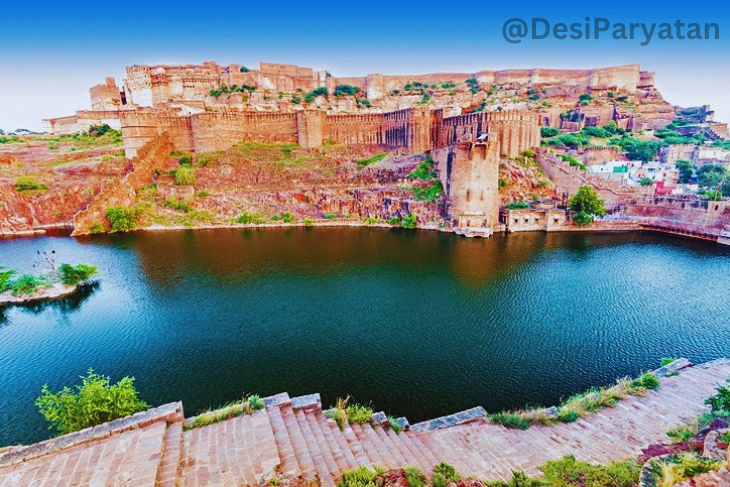
The gigantic Mehrangarh Fort, which dominates the old city of Jodhpur and is one of India’s largest fortresses, was built in the 15th century to protect the people of the famous “Blue City.” Jodhpur retains its term, which is derived from its indigo-colored homes, which are painted blue to reflect heat.
Mehrangarh, built on top of a high outcrop, is an incredible feat of engineering, with huge walls that are nearly impenetrable. Access is by one of seven magnificent gates, including Jaya Pol and Fateh Pol (the latter still exhibits cannon attack scars).
The Hindu caves are significantly more complicated and were cut from the top down, eliminating the need for scaffolding. The greatest of these is the Kailasa Temple, a massive rock-cut temple that represents Mount Kailasa and required the removal of 200,000 tons of rock.
Exploring the fort’s interesting network of courtyards and palaces, as well as a museum with a magnificent collection of relics relating to the Maharajas, are highlights of a visit. Spend some time in Jodhpur’s historic center, which is known for its eight city gates, a beautiful antique clock tower, and various bazaars selling everything from veggies to sweets, spices, and handicrafts.
The Ganges River.
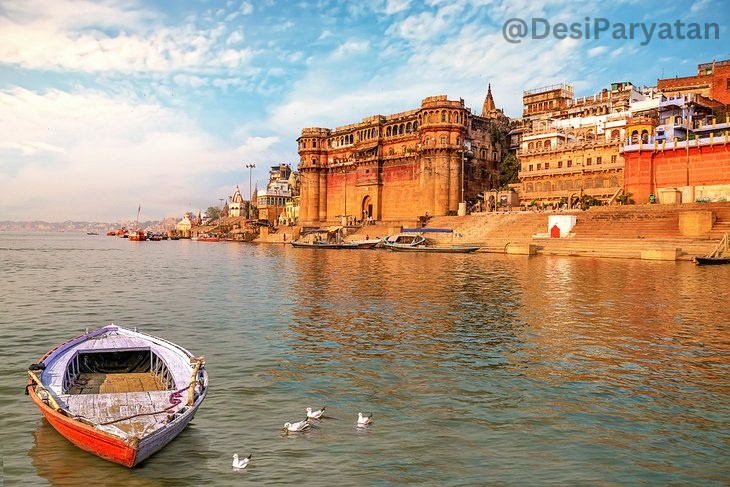
The Ganges River, also known as “Ganga” after the Hindu goddess, has long been regarded as one of India’s most sacred natural beauties. It’s also one of the country’s most popular tourist destinations, attracting both Indian nationals and tourists to witness the majesty of this mighty river.
While there are a number of cities along the river, most tourists will travel to Varanasi to enjoy the Ganges and the cultural attractions that have sprouted up along its banks. Although the city is small by Indian standards (it has a population of about 1.2 million people), it is densely packed with temples and other important religious structures, many of which are dedicated to (or on) the Ganges.
Numerous “ghats” are built along the river’s banks, allowing worshippers and tourists alike to come up close and personal. There are 88 of these Ganges access points, which are made up of sometimes steep steps that go directly into the water. While most are many centuries old, they were significantly renovated and improved in the 1700s and are some of the most stunning spots to shoot in India, with their frequently vivid, colorful festivities and festivals.
If you have time, take one of the Ganges river trips offered in the city from any of the ghats. The early morning sunrise sails are the most memorable. Topping off the experience, buy one of the little, floating offerings available from a vendor and ride it along the river (camera in hand, of course).
Mysore Palace.
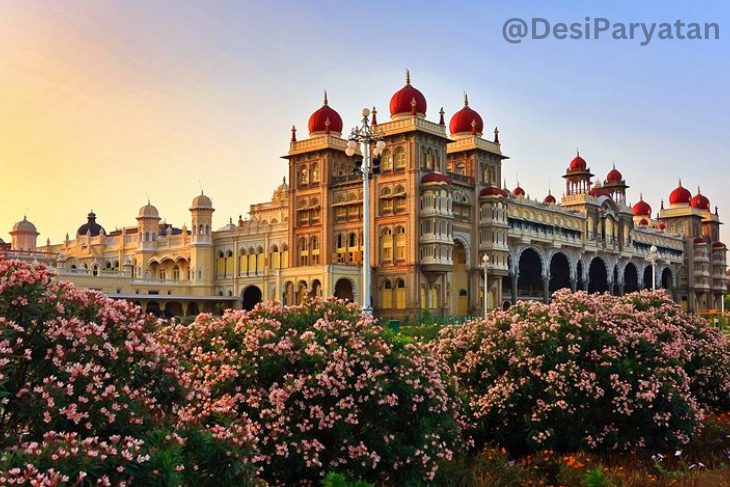
Mysore’s huge city is a treat to visit, with its diverse mix of excellent old British architecture, regal Indian palaces, and lush, well-kept gardens. While visitors who prefer shopping will enjoy the city’s famous silk and sandalwood bazaars, the major attraction is the beautiful Mysore Palace.
This beautiful three-story palace, which was completely rebuilt in 1897 after a devastating fire, features highlights such as its elegant square towers and domes; the many ornate ceilings and pillars in Durbar Hall; and the splendid Marriage Pavilion, with its glazed floor tiles, stunning stained glass, artworks, and jewelry displays. It’s also where the magnificent Golden Throne is shown on important occasions.
Be sure to catch one of the magnificent light displays held each Sunday and during holidays, when the palace is lighted by over 90,000 lights. A wonderful option to explore the palace’s vast grounds and gardens is to join a free cycle tour once inside. [15 Top-Rated Tourist Attractions in India]
Conclusion.
To sum up, our investigation into the “15 Top-Rated Tourist Attractions in India” has revealed a rich mosaic of historical, cultural, and natural marvels. All of India’s attractions, from the magnificent Taj Mahal to the serene atmosphere of Varanasi, highlight the richness and diversity of this amazing nation. India offers an array of experiences for all types of travelers, including those who are interested in history, the outdoors, or spiritual enlightenment. Allow these well regarded sites to lead you through the essence of India’s allure as you make travel plans, fostering memories that are in line with the country’s enduring beauty and cultural diversity.
FAQs For 15 Top-Rated Tourist Attractions in India.
1. Are these top-rated attractions suitable for family visits in India?
– A: Yes, many of these attractions cater to families, providing enriching experiences for all age groups.
2. Can I find guided tours for exploring these top-rated tourist attractions?
– A: Absolutely, guided tours are available for most attractions, offering insights into their history and significance.
3. Are there any seasonal considerations when visiting these attractions in India?
– A: Yes, some attractions may have optimal seasons; it’s advisable to check for the best time to visit each location.
4. Can I cover all 15 top-rated attractions in one trip to India?
– A: While it’s possible, the vastness of India may require multiple trips to fully explore and appreciate all these attractions.
5. Are photography and videography allowed at these tourist attractions?
– A: Photography policies vary; many attractions permit photography, but it’s advisable to check individual guidelines before capturing images.



